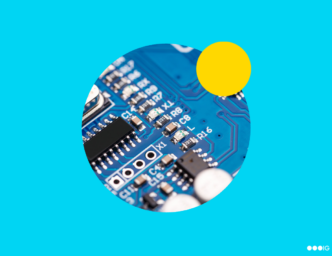Renewable energy projects are becoming increasingly crucial for utilities companies as they seek to reduce their carbon footprint, meet customer demands for green energy, and plan for long-term growth. As a leading provider of technical staffing and project management services, we know these companies’ need to implement these critical initiatives. This article will explore why these why initiatives are essential in the current environment and how some companies are putting these initiatives into action.
Why Are Utilities Companies Investing in Renewable Energy?
There are several reasons why utility companies are investing in renewable energy projects. For one, there are economic and environmental, social, and governance (ESG) incentives for cutting carbon emissions. Governments worldwide are also pushing for increased use of renewable energy, with some providing subsidies or tax credits for companies that invest in these initiatives.
Utilities companies are also investing in renewable energy projects for their long-term planning initiatives. Many utilities are looking to diversify their energy portfolios and reduce reliance on traditional fossil fuels, which are finite resources. By investing in renewable energy, they can ensure a stable energy supply in the future and remain competitive in an evolving industry.
These companies are also facing high customer demand for renewable resources. Consumers are increasingly interested in purchasing cleaner, cheaper energy, and utilities companies that can provide it are better positioned to attract and retain customers.
All of this is tied together with the fact that fossil fuel energy consumption is expected to slightly drop in 2023, according to Ember, while clean energy is expected to remain on an expontential rise.
Examples of Renewable Energy Projects Utilities Companies Work On
Renewable energy counted for about 12 percent of all energy consumed in the United States in 2021, and that number is expected to at least double over the next 20 to 25 years. The United States’ renewable energy capacity is expected to grow 60 percent from 2021 to 2026, as well. Here is how utilities companies are trying to build the infrastructure to support renewable energy and increase their use of renewables as a whole.
Connecting Solar Panels to the Grid
Solar panels are a renewable energy source that generates electricity from sunlight. Connecting solar panels to the grid is crucial in reducing carbon emissions. By connecting them to the grid, excess energy produced by the panels can be sent back to the grid and used by others who don’t have renewable resources on their home. The more renewable energy that gets sent back to the grid, the less non-renewable energy people need to consume.
This process also allows individuals and businesses with solar panels to receive credits for the energy they produce, which can reduce costs on their energy bills. This is equally true for other renewable energy methods, such as wind and hydroelectric power, which utilities companies use to diversifying their energy supply.
Predicting & Monitoring How Customers Will Use Energy Resources via GIS Strategies
Geographic Information Systems (GISs) are a powerful tool that help utilities companies predict how customers will use different energy resources. GIS uses location-based data to visualize energy usage patterns, resource availability, and environmental factors affecting renewable energy generation. These insights are crucial for utilities companies to make informed decisions about the most efficient and effective ways to implement renewable energy sources as wind, solar, nuclear.
One of the main benefits of using GIS for renewable energy planning is its ability to analyze energy usage patterns. By analyzing customer energy usage data, utility companies can identify patterns and trends in energy consumption, which can help them make informed decisions about the most effective renewable energy sources to implement. In addition to energy usage patterns, GIS can help utilities companies identify the best locations for renewable energy installations. GIS can analyze factors such as wind speed, solar radiation, and land use patterns to determine the optimal locations for wind turbines, solar panels, or other renewable energy installations. Utilities companies can maximize clean energy generation by selecting optimal sites for renewable energy installations and reducing the need for non-renewable energy sources.
GIS, as Forbes points out, can also help monitor existing renewable energy structures, too. “If cameras, sensors, or drones detect some branches getting too close to hydro wires or railway lines,” the article says, “a GIS can determine what needs to be done and will automatically send a work order to the maintenance team for that location and schedule the correct crew to fix it.”
Modernizing the Power Grid to be Adaptable for All Types of Renewable Energy
Modernizing the power grid is crucial in successfully transitioning to renewable energy sources. To fully realize the potential of renewable energy sources, the power grid must be adaptable and flexible enough to accommodate different renewable energy sources, such as wind, solar, and geothermal.
Upgrading and expanding the grid infrastructure will enable the integration of renewable energy sources, innovative grid technologies, and energy storage systems. According to the International Energy Agency, IEA, investment in these grids rose by 6% in 2021. It will continue to be the primary focus for investment to meet the 2050 net-zero emission campaign set by the United Nations.
One of the main challenges in integrating renewable energy sources into the power grid is their variability. Wind and solar power, for instance, can be intermittent, which means that they are not always available to produce electricity. This unpredictability can create instability in the power grid, leading to power outages, overloads, and other problems. Upgrading the power grid with innovative technologies, such as smart grid technology, can help overcome these challenges.
Innovative grid technology can also provide real-time energy consumption and production data, enabling utilities companies to balance the energy supply and demand. This technology allows utilities to forecast renewable energy generation and plan energy storage systems, such as batteries, to store excess energy for later use. In addition, the smart grid can enable two-way communication between a utility company and customers, providing more information on their usage habits and feedback.
Check Out: Four Ways To Upskill & Reskill Your Utilities Workforce
Building/Producing More Renewable Energy Plants
Building and producing more renewable energy plants is critical in reducing carbon emissions and meeting client demand. Renewable energy plants can include wind farms, solar farms, hydropower plants, and geothermal plants. These plants generate clean energy and reduce the need for non-renewable energy sources. Building more renewable energy plants can create job opportunities, support local economies, and improve public health by reducing air and water pollution.
Most of the investment in new energy resources is in renewable energy. Part of that is upgrading the grid to adapt to renewable sources. The other part is building plants big enough to support customers who don’t have renewable resources on their property.
The Benefits Outweigh The Challenges
As the world becomes increasingly aware of the negative impact of carbon emissions on the environment, many organizations are stepping up to do their part in mitigating the effects of climate change. As we’ve discussed, utilities companies play a crucial role in this process. However, this transition is not without its challenges.
All of these projects we’ve mentioned before come with their challenges. They take money. They take time. They take lots of manpower to build and sustain. Despite these challenges, the benefits of transitioning to renewable energy sources far outweigh shorter-term challenges. Renewable energy sources offer a sustainable, cost-effective, and clean alternative to non-renewable energy sources, such as coal and oil. They also reduce carbon emissions and provide job opportunities for communities.
We’re Your Partner In Achieving Renewable Energy Goals
At Insight Global, we understand utilities companies’ goals— and their challenges—in transitioning to renewable energy sources. Our team of experts has the knowledge, skills, and experience to help you overcome these challenges and achieve their sustainability goals. Our commitment to sustainability goes beyond the services we offer to our clients. We recognize the impact of our operations on the environment and strive to reduce our carbon footprint through various initiatives, such as reducing paper waste and promoting energy-efficient practices in our offices.
Insight Global and Evergreen, our managed services arm, is your partner in achieving your sustainability goals. We are here to help with our expertise in renewable energy technologies, innovative solutions, and tailored services. Let us work together to create a sustainable future for generations to come.
How Can We Help Achieve Your Goals?
Let us know your needs, and we'll be in contact with you in as little as 10 minutes.


 by Patrick Glynn
by Patrick Glynn


 by Brita Long
by Brita Long 

